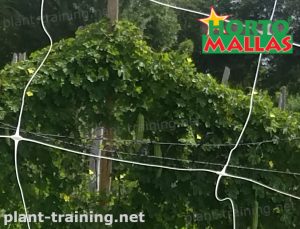Simple and Easy Plan Training in the Exact Size and Shap

The primary goal of every breeder or gardener is to increase the production and use the maximum of available space. Plant training is an ideal solution in all the cases where space is limited. The greatest advantage is that there’s no need for upgrading light, the setting or air circulation. The process is simple and easy but it has several stages one should pay attention to. As a final result, the yield could be up to 40% bigger in compare with untrained plants. During the plant training, the breeder bends stems gently and ties them in place. In this way, multiple buds have been created that use the light efficiently. The setting remains unchanged in general but the yield is higher. The procedure is not at all heavy and you can do it all alone. Size and shape of your plants are not predetermined, and you can train your plants in any wanted shape or size. You can also grow your plants flat or along the net. In both cases, side buds will be exposed to the equal quantity of light. With only main bud exposed to light, the productivity of your crop will be limited. More buds growing in the same environment lead consequently to the higher production. Producing plants of the exact size and shape provides a standard for the yield. Especially indoor crops show excellent results of the plant training without additional space and light.
Complete Control over Your Crop

Whether your crop is outdoor or indoor, plant training enables a lot of manipulation. If you apply this technique you prevent the plants grow bigger than they should. Stems remain even and you get more buds from the light. No changes to your set up are necessary. Having a complete control over your crop reduces risks. Much better distribution of light and air around the plant is possible through the proper distance between stems. For that reason, sides of the plant can produce large and numerous buds. To implement plant training on your crop, you will need garden wire or soft twine. They will hold the plants in place without doing any harm. Shorter plants catch the growing light or the sun faster and easier. Tomato ring or bamboo stake can also be implemented with this technique as an additional support. Pinching off the tops of the plants is not necessary but it is helpful. On the other side, any kind of cutting is stressful for the plants so you can simply bend the tops as you have done with the side branches.

After you have trained the plants, you should take their protection into consideration and apply bird netting. It is the reliable system in making a safe environment for your plants. Sometimes, only one small bite is enough to lower the quality of the fruits. Usually, far more than only one plant has been ruined. If your crop doesn’t meet the required standards, the overall productivity comes into question. Bird netting prevents birds from picking the plants. Complete control over your crop includes optimal growing conditions and protection from pests at the same time.
Trellis netting is the sophisticated procedure of acquiring optimal environment for training vertically growing plants. It is adjustable to a different size and space, and it can be made in the largest variety of shapes in accordance with breeder’s requirements. Vine vegetables, such as cucumbers and tomatoes need trellis netting to grow off the ground. Serving as a supporter, it is more stable than supporters for single plants. The implementation is simple and easy and it is reusable in the next season. It is recommended to install it just after the seeding when stems are small and only a couple of centimeters high.
Techniques that Pay off
Plant training is affordable and it is a small investment of your time that will certainly pay off. You should think about the type of your crop to know exactly up to which height you want to train it. The procedure varies from basic options that require no time and almost no technique to the more complicated procedures for larger spaces. In any case, lower side branches should be able to grow and flourish with enough light. Plants that are too tall to bend need to undergo the procedure of softening before they bend at a sharp angle. This technique of the plant training is called super-cropping. Sometimes, it is implemented by the plants that have gone out of the control. The screen of green is also one technique that includes screen over the plants. Most of the trainers are suitable to support heavy plants and buds. If you want the buds to grow as big as possible, you can apply defoliation – a method of strategically removing leaves on indoor-grown plants.
Smaller Plants are More Productive

The main idea of plant training is to grow numerous small plants instead of several big ones. This method shortens the time of the growth for few weeks. That means you can get more than one harvest per year with certain sorts. Enabling your crop optimal environment is not enough to acquire higher productivity. Keep in mind protection of bird pests and the fact that not all plants are growing in the same way. Some of them give the best results if trained flat while others are to be grown vertically using different kinds of nets. Grow lights or the sun often distribute unequally producing uneven growth of the plants. Training prevents the unequal distribution of light by spreading plants over the available space so they can have a necessary light on the top and on the sides. Side light increases the productivity supporting the growth of side buds instead of only the top ones.